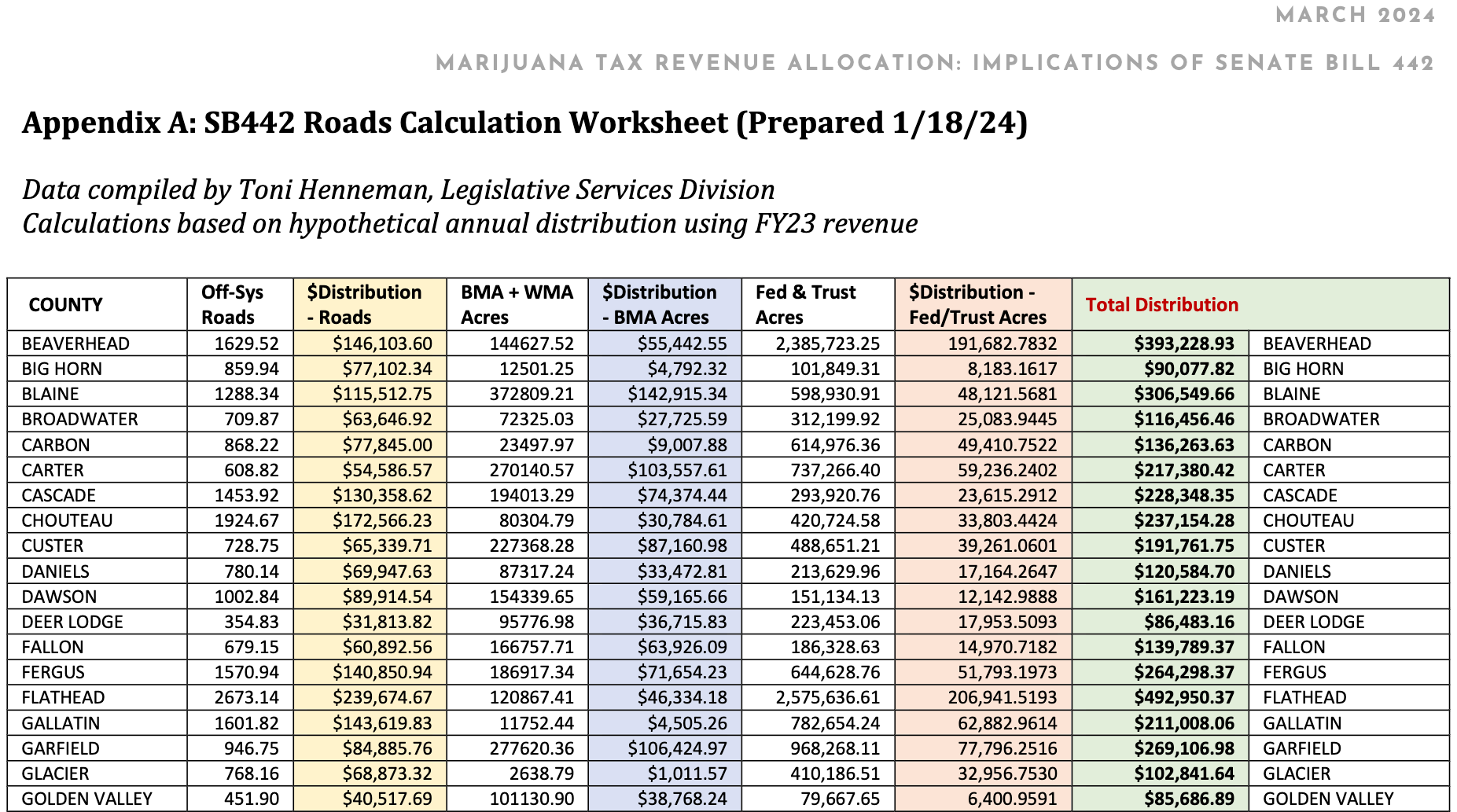Distribution of County Road Funds Awaits Veto Override Vote and Supreme Court Decision
By Denise Rivette
Senate Bill 442, the bill that, if enacted, would change how proceeds from marijuana taxes and fees would be allocated, remains in limbo. The poll to override the veto was sent out by the secretary of state to Montana state legislators on Tuesday as required by the Montana Supreme Court order issued last Friday. Governor Greg Gianforte and Secretary of State Christi Jacobsen continue to assert through their Supreme Court appeal that they are not required to allow the legislature an opportunity to override the governor’s veto.
The bill passed with overwhelming bipartisan support, but was vetoed by Gianforte who expressed his opposition to the legislation based, in part, on the fact it provides a state funding stream for local infrastructure projects.
Article 6, section 10, of the Montana State Constitution provides: “(3) If after receipt of a veto message, two-thirds of the members of each house present approve the bill, it shall become law and (4)(a) If the legislature is not in session when the governor vetoes a bill approved by two-thirds of the members present, he shall return the bill with his reasons therefor to the secretary of state. The secretary of state shall poll the members of the legislature by mail and shall send each member a copy of the governor's veto message. If two-thirds or more of the members of each house vote to override the veto, the bill shall become law.” Gianforte and Jacobsen maintain that because the Senate had adjourned but the House was in session that these provisions in the Constitution do not apply to this veto and that this veto cannot be overridden.
Wild Montana, who along with the Montana Association of Counties and Montana Wildlife Federation filed the lawsuit to force the veto override poll, asserted in a press release, “The Governor attempts to avoid not only override but also judicial review, arguing that the case presents a political question and a loophole allows him to veto at the right moment with impunity.” Their lawsuit seeks to compel the Governor and Secretary of State to follow the clear procedure mandated by the Montana Constitution and to allow the Legislature the opportunity to override the Governor’s veto of Senate Bill 442.
Lewis and Clark County District Court Judge Mike Menahan did not agree with the executive branch position and wrote in his order: “On May 1, 2023, the legislature passed Senate Bill 442 with a supermajority of legislators having voted in favor. The following day, May 2, 2023, Gianforte vetoed Senate Bill 442. Also on May 2, 2023, after Gianforte vetoed the bill but before the legislature received notice of the veto, the legislature adjourned sine die, with the Senate acting first to adjourn. At the time the Senate voted to adjourn, few if any legislators were aware of the governor’s veto. Following adjournment and a request from the bill sponsor, Jacobsen refused to initiate the post session override procedure, claiming she had not received a copy of the governor’s veto and a statement explaining his reasons for doing so. The legislature was thus deprived of an opportunity to override the veto of Senate Bill 442 and draft the policy contained therein into law.”
Gianforte and Jacobsen appealed the district court decision to Montana’s Supreme Court who ordered the secretary of state to issue the veto override poll to legislators even as the Court considers whether or not the executive branch maneuver is legal. That means that the legislative branch may override the executive branch’s veto, but whether that override is allowed to stand will depend on the judicial branch’s ultimate decision.
While the fate of Senate Bill 442 remains undecided, Legislative Services Division staff compiled an analysis on the implications of the legislation and how the new county roads allocation within Senate Bill 442 could impact the state. They provide a disclaimer stating that “this is intended as an educational resource and in no way reflects the views of the Legislative Services Division if any opinion can be gleaned from the content.”
Below is their chart depicting how the 2023 marijuana proceeds would be allocated under existing and proposed law.
County Roads is the new category added to the beneficiaries with SB442. That category would be allocated with 50% to Rural Roads, 25% to Block Management Acres, and 25% to Federal and Trust Acres. Those three categories of funds would be then be allocated across the counties according to their percentage of rural roads, block management acres and federal and trust acres.
A portion of the worksheet showing how Carbon County could benefit if SB442 were enacted is presented below. By these calculations, Carbon County would have received $136,263.63 in road funds.





